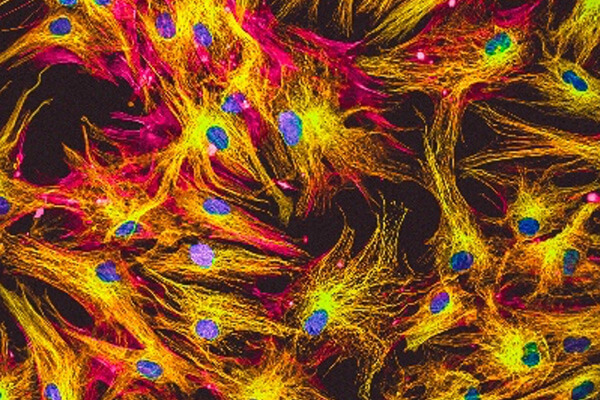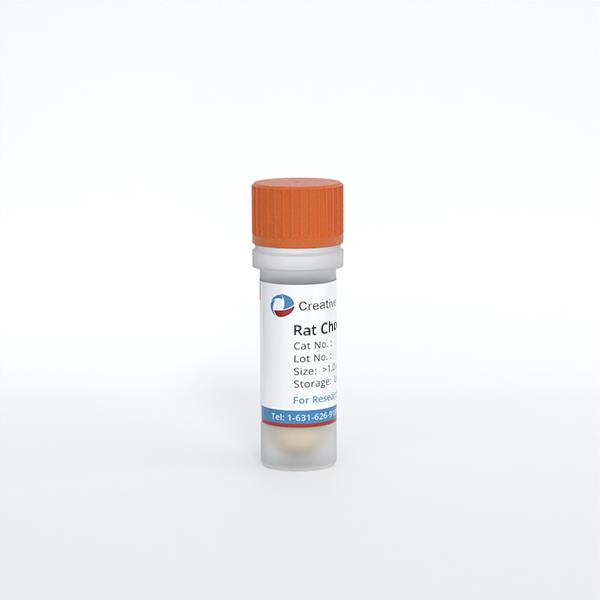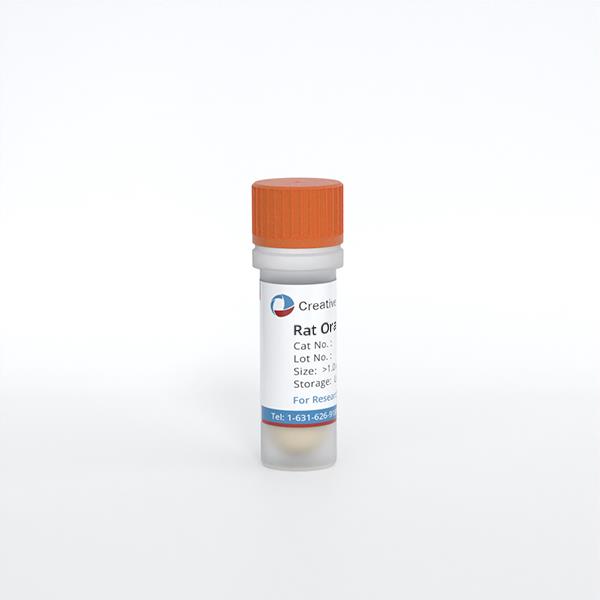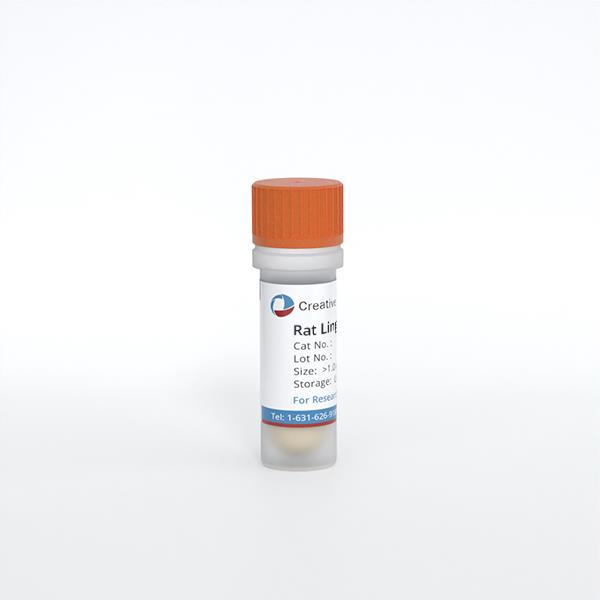Animal Primary Cells

The animal cell model is an alternative for in vivo studying the biological functions of cells. As models for human systems, researchers can use animal cells to examine a wide range of disease mechanisms and evaluate novel treatments before applying the results of these investigations to humans. Animal cell culture has found use in diverse areas, from basic to advanced research.
- Studying basic cell biology, cell cycle mechanisms, specialized cellular functions, cell-cell and cell-matrix interactions
- Toxicity testing to study the effects of new drugs
- Gene therapy for replacing non-functional genes with functional gene-carrying cells
- Production of vaccines, monoclonal antibodies, and pharmaceutical drugs
- Production of viruses for use in vaccine production
Creative Bioarray's animal primary cells are isolated from normal or diseased animal tissues. They are rigorously quality tested to meet our high standard and specifications.
- Over 500 different lots available
- Isolated from both healthy and diseased animals
- Cryopreserved immediately after isolation
- Stored in frozen vials
Search our available specified cell types to find primary cell solutions for your research.
Filters Clear all filters
Species
- Bovine (20)
- Cat (1)
- Chicken (4)
- Dog (114)
- Fish (1)
- Fruitfly (1)
- Goat (2)
- Guinea Pig (6)
- Hamster (95)
- Horse (1)
- Human (793)
- Minipig (2)
- Monkey (128)
- Mouse (866)
- Pig (106)
- Rabbit (249)
- Rat (321)
- Sheep (2)
- Squirrel (1)
- Turkey (1)
Source
- Adipose (27)
- Adrenal Gland (10)
- Airway (7)
- Anus (3)
- Aorta (83)
- Artery (178)
- Bile Duct (9)
- Bladder (45)
- Blood (190)
- Bone (13)
- Bone Marrow (154)
- Brain (158)
- Breast (63)
- Bronchus (43)
- Cartilage (19)
- Cervix (5)
- Chorion (5)
- Choroid (8)
- Ciliary Body (1)
- Colon (63)
- Conjunctiva (8)
- Cord Blood (24)
- Cornea (24)
- Dental Pulp (4)
- Dermis (109)
- Diaphragm (3)
- Ear (9)
- Embryo (21)
- Endometrium (9)
- Epidermis (25)
- Epididymis (3)
- Esophagus (31)
- Eye (87)
- Foreskin (2)
- Gallbladder (4)
- Gingiva (18)
- Hair Follicle (15)
- Heart (62)
- Intestine (150)
- Iris (1)
- Kidney (144)
- Lens (4)
- Liver (118)
- Lung (188)
- Lymph Node (26)
- Mesentery (18)
- Nose (3)
- Oral Cavity (8)
- Ovary (70)
- Oviduct (6)
- Pancreas (66)
- Pancreatic Duct (3)
- Pancreatic Islet (11)
- Parathyroid Gland (4)
- Penis (6)
- Perineurium (1)
- Periodontal Ligament (5)
- Periodontium (23)
- Peripheral Blood (150)
- Peritoneal Cavity (14)
- Placenta (29)
- Prostate (62)
- Pudenda (2)
- Rectum (3)
- Retina (36)
- Salivary Gland (3)
- Sclera (3)
- Seminal Vesicle (1)
- Skeletal Muscle (35)
- Skin (152)
- Small Intestine (54)
- Spinal Cord (10)
- Spleen (71)
- Stomach (36)
- Synovial Fluid (2)
- Synovium (9)
- Tendon (6)
- Testis (14)
- Thymus (47)
- Thyroid (34)
- Tongue (4)
- Tonsil (3)
- Tooth (4)
- Trabecular Meshwork (2)
- Trachea (41)
- Umbilical Cord (27)
- Ureter (8)
- Uterus (57)
- Vas Deferens (1)
- Vein (103)
Cell Type
- Adipocyte (4)
- Astrocyte (32)
- B Cell (30)
- Basal Cell (3)
- Basophil (1)
- Beta Cell (3)
- Cardiomyocyte (14)
- CD133+ Cell (6)
- CD34+ Cell (21)
- Cholangiocyte (9)
- Chondrocyte (14)
- Dendritic Cell (15)
- Endothelial Cell (678)
- Endothelial Progenitor Cell (7)
- Eosinophil (1)
- Epithelial Cell (480)
- Fibroblast (447)
- Glial Cell (57)
- Granule Cell (2)
- Granulocyte (12)
- Hepatic Stellate Cell (9)
- Hepatocyte (23)
- Interstitial Cell (9)
- Keratinocyte (23)
- Keratocyte (3)
- Kupffer Cell (8)
- Leydig Cell (3)
- Lymphocyte (82)
- Macrophage (31)
- Mast Cell (3)
- Melanocyte (11)
- Meningeal Cell (4)
- Mesangial Cell (10)
- Mesothelial Cell (4)
- Microglia (6)
- Microvascular Cell (306)
- Monocyte (16)
- Mononuclear Cell (107)
- Myeloid Cell (2)
- Myoblast (5)
- Myofibroblast (3)
- Myosatellite Cell (2)
- Neuron (48)
- Neutrophil (10)
- NK Cell (11)
- Oligodendrocyte (3)
- Oligodendrocyte Progenitor Cell (4)
- Osteoblast (8)
- Osteoclast (2)
- Osteocyte (3)
- Pancreatic Stellate Cell (4)
- Pericyte (20)
- Podocyte (4)
- Preadipocyte (16)
- Progenitor Cell (15)
- Red Blood Cell (12)
- Retinal Ganglion Cell (3)
- Satellite Cell (2)
- Schwann Cell (4)
- Sebocyte (1)
- Sertoli Cell (5)
- Skeletal Muscle Cell (9)
- Smooth Muscle Cell (233)
- Spermatogonium (3)
- Stromal Cell (39)
- Synoviocyte (7)
- T Cell (37)
- Tenocyte (6)
- Trabecular Meshwork Cell (2)
- Trophoblast (4)
Disease
- Acute Lymphocytic Leukemia (ALL) (15)
- Acute Myeloid Leukemia (AML) (13)
- Amyotrophic Lateral Sclerosis (ALS) (4)
- Aplastic Anemia (AA) (1)
- Arteriovenous Malformation (AVM) (1)
- Asthma (5)
- Astrocytoma (2)
- Autoimmune Hemolytic Anemia (AIHA) (1)
- Autoimmune Lymphoproliferative Syndrome (ALPS) (1)
- Breast Cancer (8)
- Cancer (144)
- Cervical Cancer (2)
- Chronic Lymphocytic Leukemia (CLL) (19)
- Chronic Myeloid Leukemia (CML) (14)
- Chronic Obstructive Pulmonary Disease (COPD) (6)
- Colon Cancer (9)
- Crohn's Disease (3)
- Cystic Fibrosis (CF) (7)
- Diabetes (110)
- Diabetes Type 1 (16)
- Diabetes Type 2 (18)
- Diffuse Large B-Cell Lymphoma (4)
- Dilated Cardiomyopathy (DCM) (1)
- Duchenne Muscular Dystrophy (DMD) (5)
- Essential Thrombocythemia (ET) (1)
- Glioblastoma (3)
- Guillain-Barre Syndrome (GBS) (1)
- Hypertension (27)
- Idiopathic Thrombocytopenic Purpura (ITP) (1)
- Inflammatory Bowel Disease (IBD) (5)
- Iron-Deficiency Anemia (1)
- Kidney Cancer (3)
- Legg–Calvé–Perthes Disease (LCPD) (2)
- Leukopenia (1)
- Liver Cancer (3)
- Lung Cancer (12)
- Mantle Cell Lymphoma (MCL) (8)
- Melanoma (2)
- Mucopolysaccharidosis (2)
- Multiple Myeloma (MM) (12)
- Multiple Sclerosis (MS) (3)
- Muscular Dystrophy (MD) (1)
- Myelodysplastic Syndrome (MDS) (3)
- Neurofibromatosis (NF) (3)
- Non-Hodgkin Lymphoma (NHL) (10)
- Normal (2341)
- Osteoarthritis (OA) (4)
- Ovarian Cancer (6)
- Pancreatic Cancer (3)
- Pancytopenia (1)
- Parkinson's Disease (PD) (2)
- Plasmacytoma (1)
- Polycythemia (1)
- Prostate Cancer (6)
- Psoriasis (4)
- Rheumatoid Arthritis (RA) (6)
- Robertsonian Translocation (ROB) (1)
- Sickle Cell Anemia (2)
- Systemic Lupus Erythematosus (SLE) (4)
- Thrombocytopenia (1)
- Transverse Myelitis (TM) (1)
- Ulcerative Colitis (UC) (2)
- Waldenström Macroglobulinemia (WM) (2)
Description: The choroid is a thin layer of tissue that is part of the middle layer of the wall of the eye, ...
Description: The periodontal ligament is composed of dense connective tissue and contains nerves, blood vessels, ...
Description: The oral epthelial cells are responsible for important functions, like the primary protection of ...
Description: The lingual epidermal cells are often mildly sloughed and form a white barrier that mixes with ...
Description: The nucleus pulposus is a milky white translucent colloid that is the inner core of the ...
Description: Enteric nervous system glial cells resemble central nervous system astrocytes. The enteric nervous ...
Description: Renal tubular epithelial cells line line the renal tubules, which play a role in the absorption of ...
Description: The ureter is a tube that carries urine from the kidney to the urinary bladder. Urine passes ...
Description: The bladder is a urine storage organ. It is a sac-shaped structure located in the pelvis with a ...
Description: Pericytes are fibroblast-like cells with extensive cytoplasmic processes that wrap around ...
Description: Renal collecting ducts are microscopic passages that connect to multiple nephrons. Tubular fluid ...
Description: The thyroid is a small, butterfly-shaped gland which can product hormones such as triiodothyronine ...
Description: Islets are groups of cells in pancreas. The pancreas is an organ that makes hormones to help break ...
Description: The pituitary gland is an important endocrine gland in the body that secretes growth hormone and ...
Description: The thymus is a superior mediastinal retrosternal organ. It is bilobed and has two subcomponents: ...
Description: The adrenocortex is the outer region and also the largest part of an adrenal gland. It produces ...
Description: The exocrine pancreas is responsible for secretion of digestive enzymes, ions and water into the ...
Description: Parathyroid glands are located behind the thyroid at the bottom of the neck. The parathyroid ...



